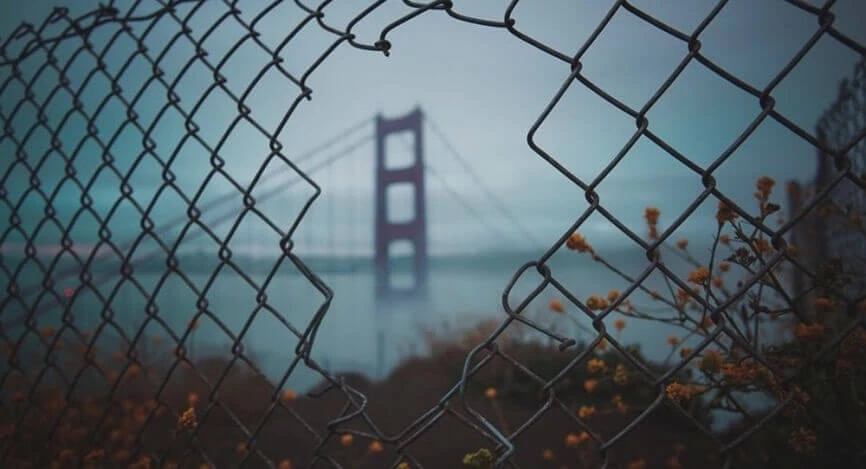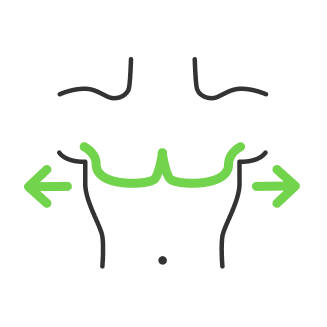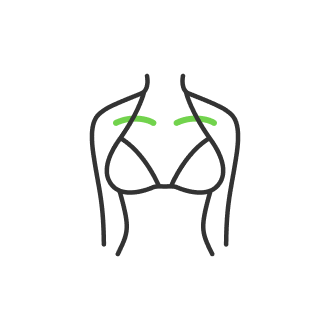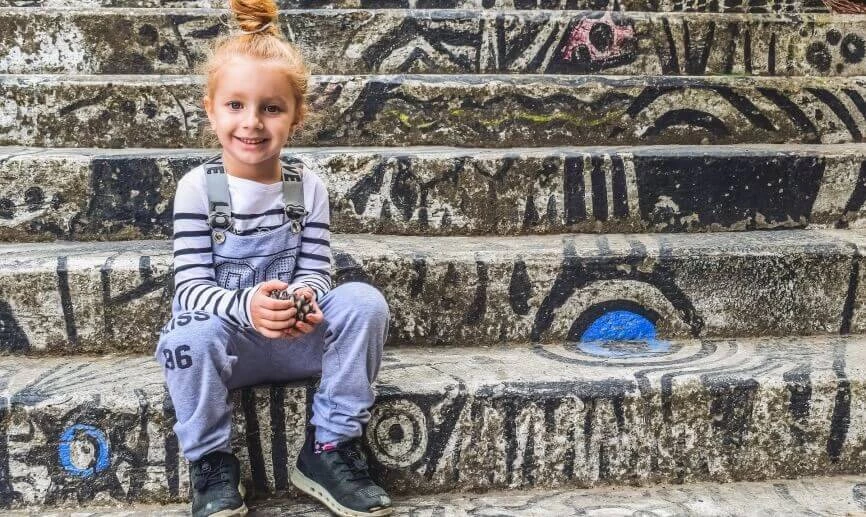Urban Exploration Photography

- What is urbex photography?
- How to find abandoned places
- 1. Contacts
- 2. Research
- Urbex photography tips
- Camera settings
- Photo conditions
- Long exposure
- Angles
- Use the ambient objects
- Rule of thirds
- Leading lines
- Urbex photo editing
- Conclusion
Surely each of us has enjoyed the footage shot in abandoned buildings or even cities and villages at least once. A certain mystery and at the same time the mysticism of these frames rivets our eyes. You don't even have to go far to take such a photo. Perhaps in every city, there is a nook where it may seem that a person's foot hasn’t set foot for a long time. How to make such photos attract the viewer even more? Today we are going to discuss it in this article, and give you some tips about urban photography.
What is urbex photography?
Urbex or "UE" is an abbreviation that stands for urban exploration photography.
The term basically describes the exploration of something unseen or off-limits, parts of human civilization you are not supposed to visit.
Forbidden or abandoned as well as unusual places have a special attraction to many people. We would like to know what is hidden there. We want to satisfy our curiosity and experience the thrill. Urbex meant to give in to these urges. As soon as you are opening a door that is supposed to be shut, you are entering urban exploring.
But beware, in most cases, the entering of such places is considered the same as trespassing. So if you are urbexing, you should be aware of legal consequences in your country. Financial penalties or even prison sentences might be the result of this hobby. Since it could be a criminal like, you should not trifle with it. In addition to that, the exploration of urbex locations can also be a risk to your health. And from time to time, you could even be risking your life. It is very important to know that.
There are many different terms for urban exploration. Like play second, infiltration, or roofing. But some of those words are just subcategories of urbex. Infiltration for example is the name for exploring active or in-use buildings. The risk of being caught while doing that is obviously relatively high. Roofing, however, describes the climbing of roofs, cranes, or other man-made structures. Mostly you will be rewarded with a spectacular view. But roofing is also very dangerous if you have not got that much experience with climbing. There are more examples like draining, but our favorite part of urbex is the exploration of properties that were abandoned. Rubrics, by the way, is the rural counterpart to that. It is basically urbex outside of urban environments.
How to find abandoned places
Before getting practical, we have to continue the theoretical part for a bit longer because if you do not know where to find abandoned places, you obviously can not explore them.
People often ask what the address of this place or that place is. Whoever usually, coordinates of abandoned sites are not given away easily in order to protect them because places get overrun. The chances are that they can destroy it or see it up, and that is the interest of nobody. To find abandoned places usually needs three things. These are good contacts, a lot of research, and simply luck. Let us take a deeper look at this.
1. Contacts
There is an unbelievable amount of platforms for urbexes online. You should participate in all those channels where people are talking about dependent places. On Facebook, for instance, you can find plenty of groups, the same as on Instagram, Reddit, blogs, and forums. Join these pages and get to know some of those people. Exchanging knowledge may lead you to even explore with some people together. That way, you will learn the addresses of new places and additional chances to meet new people. In general, it is a good idea to connect with locals when you want to explore a place that is far away from your hometown. As you are getting new contacts, make sure to stay in touch with them to have options to choose from when it eventually comes down to urbexing. Locals usually know the best spots in their hoods and because of insider knowledge, they can tell you the best access points or what might be dangerous when you are exploring a place they know. The Urbex community is evolving and depending on your location and country, you can find certain forums where those urbexers are exchanging information and stick together in general there. At these forums, you can find particular pictures that you may like. And if that happens, you can message and start contact with the poster. If you get the information that you were interested in, do not forget to give something interesting in return to maintain the good manners of the community that shares with you. When you are new at the forum or any other place where the community gathers, it is obvious that nobody wants to share the intel with you. People need to trust you first before you can expect anything from them. The rest takes care of itself. Either you have built your own network of valuable urbex contacts, or you established a reputation and people contact you on their own and even give you addresses of super cool secret urbex locations.

2. Research
Research on the internet can be really time-consuming, but this is part of the game. Before starting to google something, it is important to know that most of the abandoned structures have their own code names in order to protect them because outsiders would have a hard time finding these sites. In some very exceptional cases, these sites would get multiple code names, which makes it even more complicated. Thus, it is crucial to find out the real name of a place, this will make it you easier time to find actual information about it.
Urbex photography tips
As we are getting to our place, it is time to prepare our device for actual photography. We are going to discuss some settings of the camera that are required sort of adjustments to get outstanding shots. We will not go too deep with these settings, our task is to get some basic understanding of that matter. The most essential settings are the ISO, Aperture, Depth of Field, and shutter speed.
Camera settings
-
ISO
The ISO or ASA establishes your sensor’s capability to capture a certain amount of light going through. The higher is ISO, the more light you get in your frame. Higher ISO also provides more frame noises. Thus, it depends on where you are shooting from. Obviously, there is usually less light in the building as it is covered with walls and roofs. But since we are going to shoot in the abandoned structures, there would probably be broken walls and windows that would serve us as natural light sources. You need to take into account all light sources and where it comes from relating to the shooting location to not overexpose your frame with unnecessary light. That way, it would be better to keep your ISO setting low, to not get much noise in your photographs, and rely on the natural light coming in that should be enough.
-
Aperture
If you look at the aperture settings in your camera, you will notice it works in f/ stops value. It corresponds to how open your lens is. The lower f-stop is, the bigger would be the opening, and more light will be going through your lens. The higher f-stop, the smaller the opening, and less light will come in. This relation is sorta counterintuitive, but you have to just remember how it works.
The other thing that aperture controls is the depth of field. Depth of field determines how much focus is in the area you are focused on. The more open the area you are shooting (landscape) the more open should be the aperture. The closer you are to the object or the smaller the object you are focusing on, the less should be the depth of field and the smaller is the aperture.
-
Shutter speed
The lower is the size of your aperture, the less light will go in because the hole is more closed. That is where shutter speed enters. Shutter speed controls how much time is your shutter open. Thus, it has a relation with the settings above. Shutter speed controls the motion of the object. If you want to have deeper research, we would recommend you to find the topic on our blog about camera settings for light painting for instance. Going back to shutter speed, the more static image you need, the higher number you put into the setting. Less speed - more motion blur.
Here is a good illustration to recap all the discussed above in one image.

This scheme will help you to adjust your settings to make your photo look better.
Photo conditions

Lighting is the key. The first tip would be to not photograph buildings in the shadows. Usually, the light from the sun covers the building partially. You need to find the angle where you can see the lighted side before making a photo. Making a photo if the building stays in shadows causes two issues. The 1-st issue is that this photo would be harder to edit, which we will also discuss further. The 2-nd issue is that it just looks bad, the human eye prefers to see the light rather than darkness or at least some gradual balance between them both.
Long exposure

The 2-nd tip for you to have amazing photos is to lower the speed. Shutter speed is a key here. Using a slower shutter speed allows more light to get into the frame, and also provides a better depth of field. For that matter, using a tripod is a crucial gear. Otherwise, with slower shutter speed, your camera will capture unnecessary jitters coming off your hands even just pushing a button. Thus, to make long exposures, we need to lower shutter speed and put the aperture with a higher f/ stop. Since nothing is moving in our frame, the sensor will get enough time to make every detail stay in focus. You can use that tip to photograph inside the building for some hallways for instance. This tip also works for outside shooting, for landscapes specifically. Thus, the method is the same used to cover more details in a wide area in the frame.
Angles

Try to look for different perspectives of the same subject. When you are photographing structures, the rule of thumb is to make an angle that covers the structure as a whole or as a complete part of it. For instance, if you are shooting a door frame, make sure that you get the left and right walls in the frame, so it gets a better 3D perspective to the image which gives more depth.
Use the ambient objects

If the object or structure is not that interesting to take a shot on it, try to shoot it through something. As you can see in the image above with a building on it where we talked about shadows, we used leaves to shoot through, which made the entire image look more appealing and artistic. The same method is used on that photo of a gas mask. Make it that the ambient objects appear around the shooting object, centering it inside the frame.
Rule of thirds
The rule of thirds in photography is a composing rule which applies to the object in the left or the right third of the image, letting the other two-thirds more open.
As you can see the reticle on the image, the whole idea of the rule of thirds is based on putting the object that we want to pay attention to in one of the line crosses. It is called that because we divide images into three parts, both horizontally and vertically, that way we get nine equal parts. The area of crossing lines is called the points of interest. Most of the cameras have this grid overlay due to how popular this method is. All you need to do is to avoid placing a shooting object in the middle of your frame.
Leading lines
When we look at any interesting photo, it usually apply some tips from the above. But an advanced tip that would really help your viewers to read the photo is leading lines. The lines appear as a natural geometry produced by a composition of the objects in the frame. These lines will lead the point of interest deep inside the photo. It is typically well emphasized while shooting roads, railways, and staircases.

But you can also get those lines with the structure’s geometry too.

Light can also serve as a guide for a viewer. If you have different light values in one frame, the eye will read that from the lower value to the higher value, that is the nature of our perception. Where the light has more value, there you can place the object to observe.
Urbex photo editing
We found the place, took a photo, following all the tips, can we do any better?
As you observe the photos we are representing for urbex photography, you may notice that those images are not stock. Post-processing is able to make your photos look even better. Sometimes there are overexposed parts of the image that you can tone down by replacing with darker areas of the image. In order to get smooth transitions between light and dark parts in the photo, we use a soft brush and layer mask. What comes to a color correction is all matter of taste, we would advise using the RGB color curve which is a flexible tool to get a certain image style with it.
Many professional photographers considering the community tendencies are overusing HDR tech for post-processing. This may be a style, but we think that it is very important to keep the atmosphere of the mystery of getting into unknown places with its natural lights just adjusted a bit. To convey the mystery, you can emphasize it by using a cold color set, also achievable with camera settings. But in case you forgot to set it on the cam, make sure to fix it in Photoshop.
Conclusion
Urbex photography is a complex of measurements. A half of it is taken by the research for the good shot and the way to get it is also relevant to the way how well you know the urbex community that can share the information with you. In case you are just wondering how to take those shots and let us say you already have the place to shoot somewhere nearby, then you can go straight on and try the tips and see how it looks. Some people get lucky having those places appear close by but for others it makes a whole journey starting from the intern ending up traveling and reaching out to the place far away from the home. Make sure to get a friend with you on the journey to stay safe and take care of each other.
Co-founder of RetouchMe. In addition to business, he is passionate about travel photography and videography. His photos can be viewed on Instagram (over 1 million followers), and his films can be found on his YouTube channel.
Moreover, his profile is featured on the most popular and authoritative resource in the film industry — IMDb. He has received 51 international awards and 18 nominations at film festivals worldwide.

with RetouchMe














